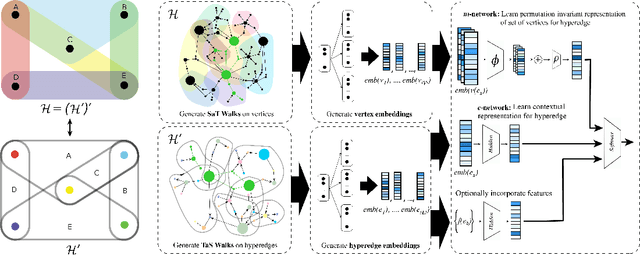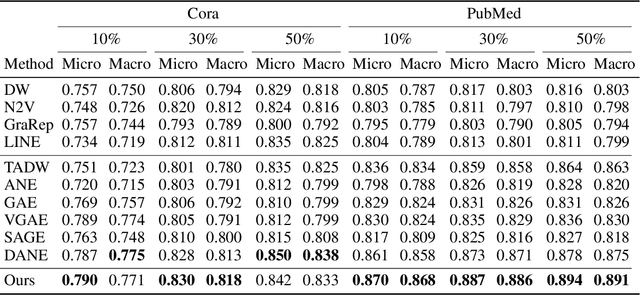Deep Hyperedges: a Framework for Transductive and Inductive Learning on Hypergraphs
Paper and Code
Oct 07, 2019


From social networks to protein complexes to disease genomes to visual data, hypergraphs are everywhere. However, the scope of research studying deep learning on hypergraphs is still quite sparse and nascent, as there has not yet existed an effective, unified framework for using hyperedge and vertex embeddings jointly in the hypergraph context, despite a large body of prior work that has shown the utility of deep learning over graphs and sets. Building upon these recent advances, we propose \textit{Deep Hyperedges} (DHE), a modular framework that jointly uses contextual and permutation-invariant vertex membership properties of hyperedges in hypergraphs to perform classification and regression in transductive and inductive learning settings. In our experiments, we use a novel random walk procedure and show that our model achieves and, in most cases, surpasses state-of-the-art performance on benchmark datasets. Additionally, we study our framework's performance on a variety of diverse, non-standard hypergraph datasets and propose several avenues of future work to further enhance DHE.
 Add to Chrome
Add to Chrome Add to Firefox
Add to Firefox Add to Edge
Add to Edge